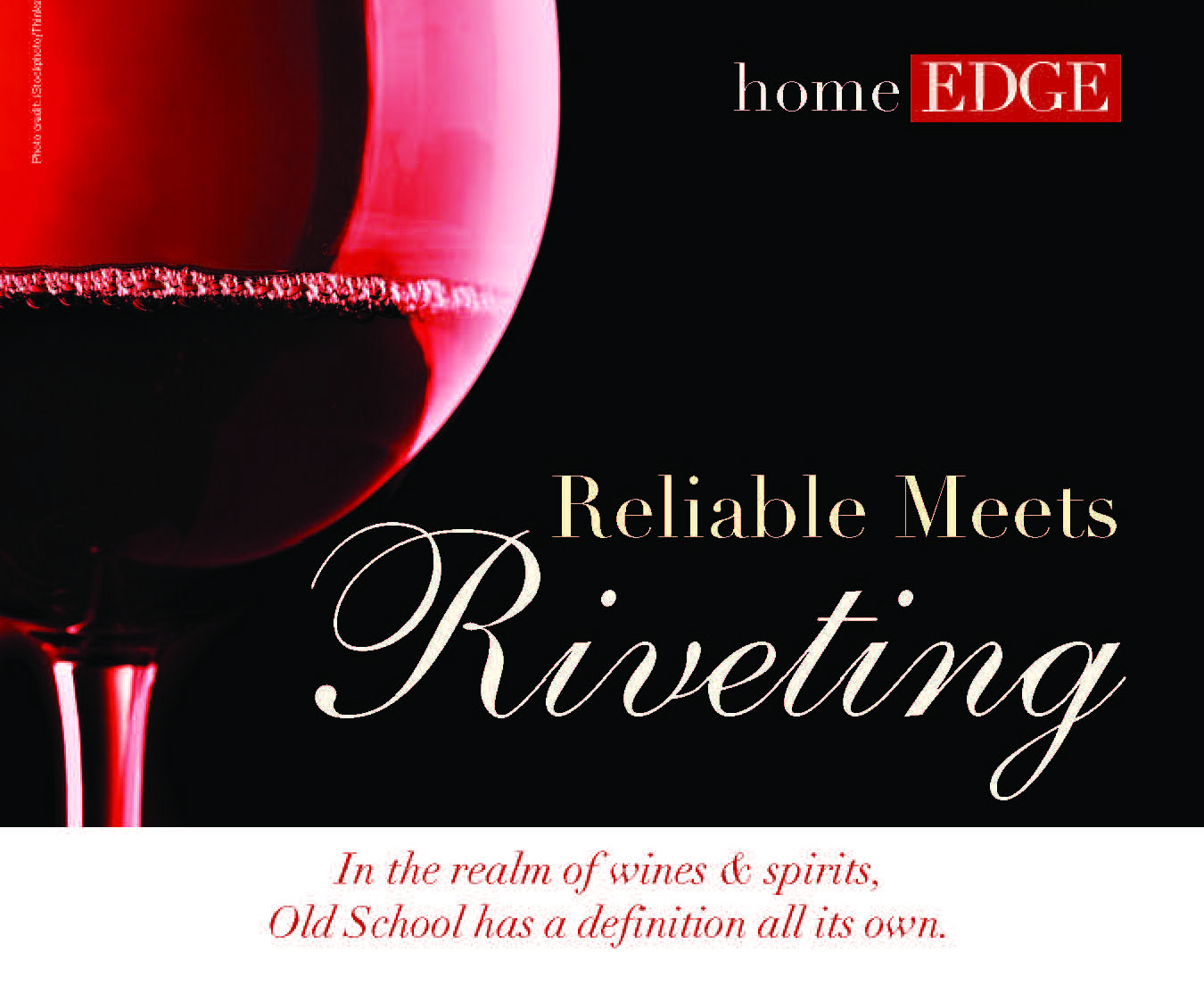There is simply no explaining some of history’s weirdest trends.
Imitation is the sincerest form of flattery. Until the imitators suddenly realize how stupid they are. Our cultural history is littered with absurd trends that enjoyed a shining moment of mass fascination, only to wind up as objects of ridicule. Most have been mercifully laid to rest for all time, yet others inexplicably continue to rise from the crypt, rediscovered or reinvented by a new generation. The following trends have yet to return—thankfully, but perhaps not permanently. Just remember, as you read about them and chuckle, there is no telling what can happen when a few million of us decide together that some thing is the next big thing.
Color Me Dreadful
The 1970s may be remembered for outlandish fashion and funky, eye-popping design, but that is more a product of retro TV commercials and revisionist history than reality. Clothing, carpeting, drapes, furniture, countertops, cabinets, appliances and even cars were drenched in drab, dreadful burnt oranges, dark walnuts and two of the ugliest colors ever yet realized: Avocado Green and Harvest Gold.
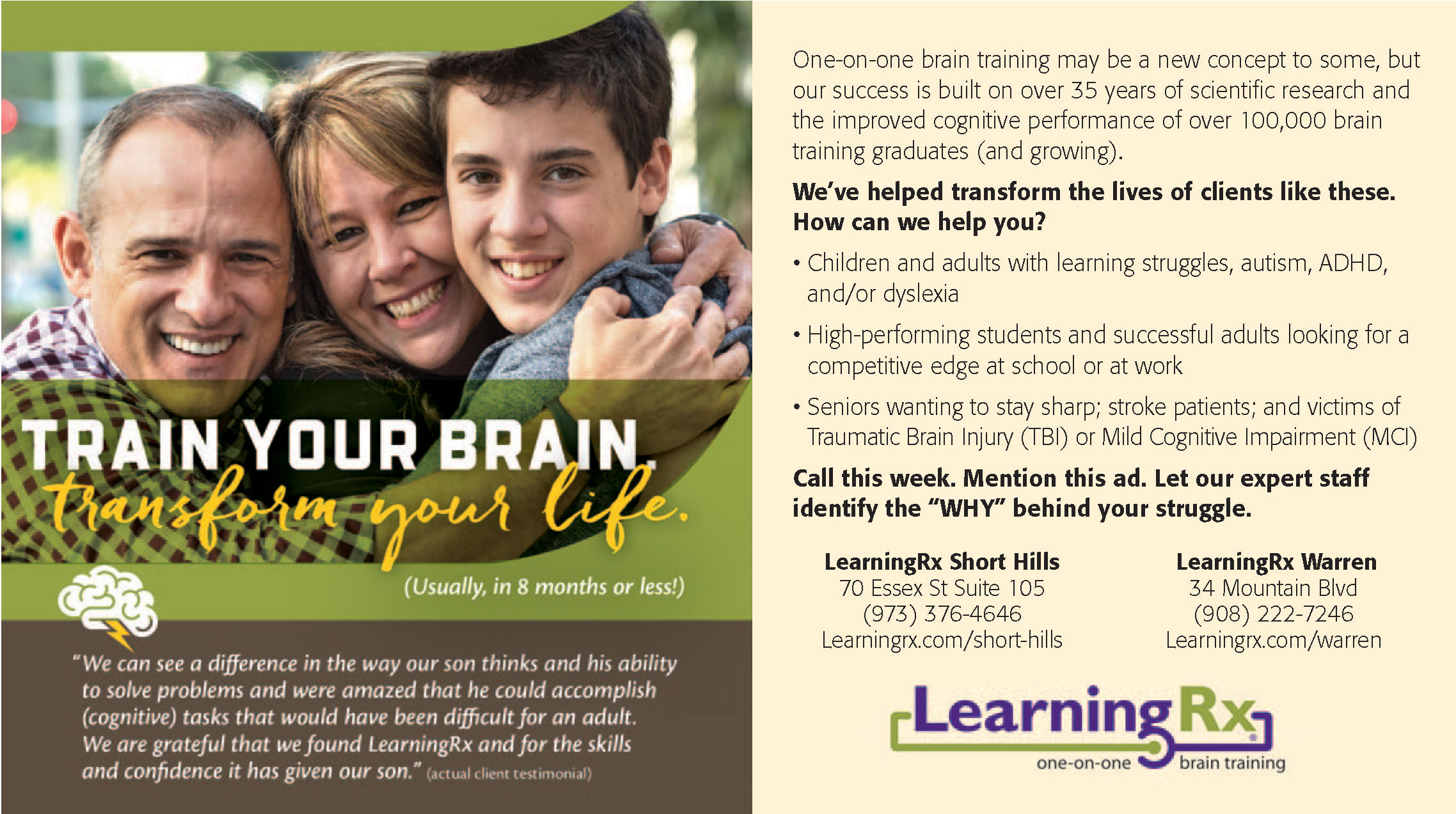
Those who claim there is “no accounting for taste“ might be surprised that a good deal of accountability for these nauseating hues lies right here in New Jersey. For more than a half-century, a select committee of 10 people, whose identities have never been disclosed to the public, has met twice a year with executives of Pantone, a company based in the Bergen County town of Carlstadt. Founded in 1963 by Lawrence Herbert—who created a system for identifying, matching, and communicating colors for consistency across all design industries—Pantone has a mind-numbing 1,925 colors in its current catalog. Its Color Institute studies how “color influences human thought processes, emotions and physical reactions, furthering its commitment to providing professionals with a greater understanding of color and to help them utilize color more effectively.” Avocado and Harvest were Pantone creations; their sister colors included Navajo White and Selective Yellow, which sound vaguely racist today.

 I was a pre-teen in the early ’70s, and I swear that almost everything that came in more than one color also came in Avocado Green and Harvest Gold. My objection to these colors is perhaps more visceral than it ought to be. One weekend in 1972, my parents rented an enormous Avocado Green Plymouth Fury station wagon (with matching interior) while waiting for our little white Audi wagon to be repaired for the umpteenth time. Halfway through the 100-mile journey to our summer house in the Catskills, the noxious smell of the Naugahyde, combined with the nauseating color scheme, literally made me vomit. It was the last time that I remember ever being carsick. Now you won’t find a single Avocado Green object in my home. Well, except for actual avocados, which I love. Go figure.
I was a pre-teen in the early ’70s, and I swear that almost everything that came in more than one color also came in Avocado Green and Harvest Gold. My objection to these colors is perhaps more visceral than it ought to be. One weekend in 1972, my parents rented an enormous Avocado Green Plymouth Fury station wagon (with matching interior) while waiting for our little white Audi wagon to be repaired for the umpteenth time. Halfway through the 100-mile journey to our summer house in the Catskills, the noxious smell of the Naugahyde, combined with the nauseating color scheme, literally made me vomit. It was the last time that I remember ever being carsick. Now you won’t find a single Avocado Green object in my home. Well, except for actual avocados, which I love. Go figure.
Beanie Weenies
We all grew up with Jack and the Beanstalk, the tale of a boy who trades his family cow for a handful of magic beans. In most versions, Jack comes out on top of this transaction. This was not the case for the countless millions who exchanged fists full of cash for a different type of bean-based promise. This story begins in 1986, when Ty Warner, the top salesman at Dakin & Co.—the world’s largest maker of stuffed toys—suggested to the higher-ups that using plastic “beans” as filler instead of stiff cotton would make the toys more flexible and posable. He was thanked by being fired.

 Warner pressed on with his idea and, in 1993, founded Ty Inc. to produce Beanie Babies. Warner saw the product itself as secondary to the marketing. He priced Beanie Babies at an affordable $5, but sold them only in limited quantities to small specialty shops and toy stores rather than big-box chains—to raise desirability by creating scarcity. Consumers could never find an entire collection of Beanies at one single store.
Warner pressed on with his idea and, in 1993, founded Ty Inc. to produce Beanie Babies. Warner saw the product itself as secondary to the marketing. He priced Beanie Babies at an affordable $5, but sold them only in limited quantities to small specialty shops and toy stores rather than big-box chains—to raise desirability by creating scarcity. Consumers could never find an entire collection of Beanies at one single store.
In 1995, Warner started “retiring” certain Beanie Babies, triggering explosive interest in the secondary collector market. Prices for these originals surged past $20. Meanwhile, Warner’s overseas factories were pumping out boatloads of non-retired ones. By 1998, Ty Inc. was making more than $1 billion in profits.
By the turn of the 20th century, rabid collectors and misguided investors, uninterested in trivialities like supply and demand, had become obsessed with collecting Beanies as an investment. The arrival of eBay around this time only fueled their madness; some of the rarest were selling online for as much as five figures. In 1999, Warner officially “retired” several more Beanie Babies, but this time there wasn’t any market response—no notable increase in value or spike in demand. It was the beginning of the end.
Collectors panicked and flooded eBay with tens of thousands of them and their value blew away like sand in the Sahara. In desperation, Warner ordered all production halted by the end of the year, but his announcement did nothing to stop the big bust. By the early 2000s, most Beanies were worth between 1 and 5 percent of their former prices and wound up in truck-stop claw machines. Don’t be too quick to shed a tear for Warner, however. In 2020, the 76-year-old ranked 359th on the Forbes 400 list of the richest people in America, with a net worth of $2.3 billion.
Record Breakers
Half a century ago, before the internet, cable and even VCRs, the big three national broadcast television networks (CBS, NBC and ABC) produced pretty much all there was to watch. When they struck gold with a hit TV series, they often attempted to leverage their stars’ popularity by ushering them into the recording studio—whether or not they had even a shred of singing talent. Not to worry, they could always cut a spoken record. With very few exceptions, the result was a hilariously awful novelty single or, worse, a full-blown album. And, of course, they sold like hotcakes. These ill-conceived celebrity records are collectible kitsch today, but back in the 1960s they could be found in almost every home in America. These celebrity recordings are a few of my personal favorites. All can be found online:
A 1965 episode of The Addams Family featured Ted Cassidy (aka Lurch) as an overnight teen idol pop star. Cassidy teamed up with Gary Paxton—producer of “Alley-Oop” and “Monster Mash”—on a Motown-style dance single entitled “(Do) The Lurch.” Cassidy actually performed it on the popular variety shows Shivaree! and Shindig! for Halloween.
Sebastian Cabot, who is best remembered today for his role as Brian Keith’s butler, Mr. French, on Family Affair—and as the voice of Bagheera in Disney’s The Jungle Book—recorded a full album of poetic interpretations of Bob Dylan songs in 1967. Sebastian Cabot, Actor featured a full orchestra, and included “Like a Rolling Stone,” “Blowin’ In the Wind” and “It Ain’t Me, Babe.”
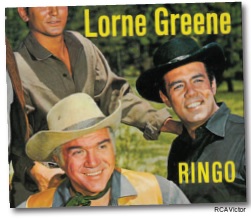 Lorne Greene, who played frontier patriarch Ben Cartwright on Bonanza, had a #1 hit on the US Billboard charts on December 5, 1964 with “Ringo”— a 45 from his album Welcome to the Ponderosa. Singing satirist Allan Sherman re-recorded the song as “The Ballad of Ringo Starr.”
Lorne Greene, who played frontier patriarch Ben Cartwright on Bonanza, had a #1 hit on the US Billboard charts on December 5, 1964 with “Ringo”— a 45 from his album Welcome to the Ponderosa. Singing satirist Allan Sherman re-recorded the song as “The Ballad of Ringo Starr.”
In 1966, when Batman was the top-rated TV show in the US and “Bat-mania” was sweeping the country, MGM Records signed Burt Ward (aka Robin) to release “Boy Wonder, I Love You” and “Teenage Bill of Rights”—written and arranged by none other than Frank Zappa and performed by The Mothers of Invention. “It was one of the weirdest projects I’ve ever been involved in,” Zappa later reflected.
On the subject of weird, among the most famous/ infamous celebrity albums was a 1968 LP entitled The Transformed Man by TV’s Captain Kirk, William Shatner. It included a disturbing version of Bob Dylan’s “Mr. Tambourine Man” as well as dramatic readings of Shakespeare. George Clooney once included The Transformed Man in his “desert island disc” collection as an incentive to get off the island. Shatner’s rendition of “Lucy In the Sky with Diamonds” was once voted the all-time worst Beatles cover.
Unsafe at Any Speed
Back in the 1960s and ’70s, nothing was cooler than motorcycles and sportscars. Steve McQueen said so! Naturally, kids wanted bicycles that looked like both. So in 1963—the same year that Chevrolet began using the same name for its Corvette—Schwinn introduced the Sting-Ray (below), touting it as “The Bike with the Sports Car Look.” Schwinn’s R&D director Al Fritz was inspired by middle schoolers in Southern California, who customized their old bikes. The concept was quietly ridiculed by upper management… until the entire first production run of 45,000 sold out in two months.
Fast-forward to 1969, when Easy Rider grossed 60 million dollars worldwide. Peter Fonda and Dennis Hopper were nominated for Oscars, but the real star of the movie was Fonda’s “chopper,” which was fitted with Angel Forks that extended the front wheel far forward, with no front brake. Fonda couldn’t turn or stop it, but he sure looked good trying.
 My 5-speed Sting-Ray was a dream ride: banana seat, ape-hanger handlebars, a fat rear tire, chrome flared fenders, hand brakes and a “Stik-Shift” mounted to the top frame bar. After Easy Rider, I was one of the countless kids who added Angel Forks to their Sting-Rays. The challenge was learning how to keep from jack-knifing on turns. It took a lot of nasty falls on unforgiving blacktop before getting the hang of it.
My 5-speed Sting-Ray was a dream ride: banana seat, ape-hanger handlebars, a fat rear tire, chrome flared fenders, hand brakes and a “Stik-Shift” mounted to the top frame bar. After Easy Rider, I was one of the countless kids who added Angel Forks to their Sting-Rays. The challenge was learning how to keep from jack-knifing on turns. It took a lot of nasty falls on unforgiving blacktop before getting the hang of it.
That same year, in Britain, Raleigh launched its competitor to the Sting-Ray: The Chopper. Loaded with many of the same features as its American cousin, it was also designed specifically for popping wheelies. Back heavy and inherently unstable (the front wheel was 20 percent smaller than the rear), it wobbled dangerously at even moderate speeds and was prone to flipping “arse over tea kettle.” As with the Sting-Ray, its solo-polo seat and sissy bar encouraged double riding; its stick shift was nicknamed the “Impale-o-Matic.”
A few years ago I wrote a story for this magazine that reminisced about potentially lethal toys from the 1960s and ’70s. The Chopper didn’t quite make the cut, but it provided some painful lessons in physics for its young owners. Despite an alarming number of near-fatal accidents being reported in the press—and public safety experts decrying the Chopper as “a dangerous toy”—sales jumped 55 percent in two years and remained robust until the 1980s, when the BMX craze arrived, replacing one cool trend with a safer one that included pads, helmets and other sensible items.
Both the Sting-Ray and the Chopper are fondly remembered today by 50- and 60-somethings. Why the nostalgia for all those face-plants and near-castrations? As Hunter S. Thompson wrote of this generation in his book Hell’s Angels, “They shun even the minimum safety measures that most cyclists take for granted. You will never see one wearing a crash helmet. Anything safe, they want no part of.”
Pole Cat
 Alas, some trends truly defy reason or explanation. In 1924, a Hollywood theater owner hired merchant sailor, movie stuntman and childhood human fly (how’s that for a résumé!) Alvin “Shipwreck” Kelly to perch atop his building’s flagpole, as a publicity gimmick, for 13 hours and 13 minutes. It worked…all too well. Almost instantly, Kelly became a national celebrity and flagpole-sitting became an American obsession. For the rest of the decade, young people were scaling flagpoles hoping to set new records and attract newsreel cameras for a few flickering seconds of fame.
Alas, some trends truly defy reason or explanation. In 1924, a Hollywood theater owner hired merchant sailor, movie stuntman and childhood human fly (how’s that for a résumé!) Alvin “Shipwreck” Kelly to perch atop his building’s flagpole, as a publicity gimmick, for 13 hours and 13 minutes. It worked…all too well. Almost instantly, Kelly became a national celebrity and flagpole-sitting became an American obsession. For the rest of the decade, young people were scaling flagpoles hoping to set new records and attract newsreel cameras for a few flickering seconds of fame.
Kelly pursued his new vocation with zeal for the remainder of the Roaring ’20s. He appeared in 28 US cities, continually raising the height of his flagpoles, duration of his performances and, of course, his appearance fees—to a jaw-dropping 100 dollars an hour. His crowning moment came in 1930 here in New Jersey, on Atlantic City’s Steel Pier, when he sat on a 200-foot pole for an incredible 49 days and one hour, which is still a world record.
Daredevil stunts fell out of favor during the Depression, and Kelly soon came to be regarded as a public nuisance. His last hurrah was in 1939, when Dunkin’ Donuts sponsored him to consume its product while doing headstands on a wooden plank outside the 54th floor of the Chanin Building on 42nd Street in New York City. Kelly rejoined the Merchant Marines during World War II. After the war, he became destitute. He collapsed and died in 1952 on a street in Hell’s Kitchen, where he’d grown up as an orphan, holding a diary of his more than 13,000 hours of flagpole sitting. He had titled it The Luckiest Fool on Earth.
Editor’s Note: Luke Sacher is a documentary film maker who has authored several articles for EDGE, including loving looks at mad scientists, catastrophic business decisions and the aforementioned dangerous toys. He also interviewed Jerry Lewis and his son, Anthony, for the magazine. Luke actually does own one of the truly rare Beanie Babies, although it is no longer worth thousands; his mother bought it at a garage sale for less than a dollar.
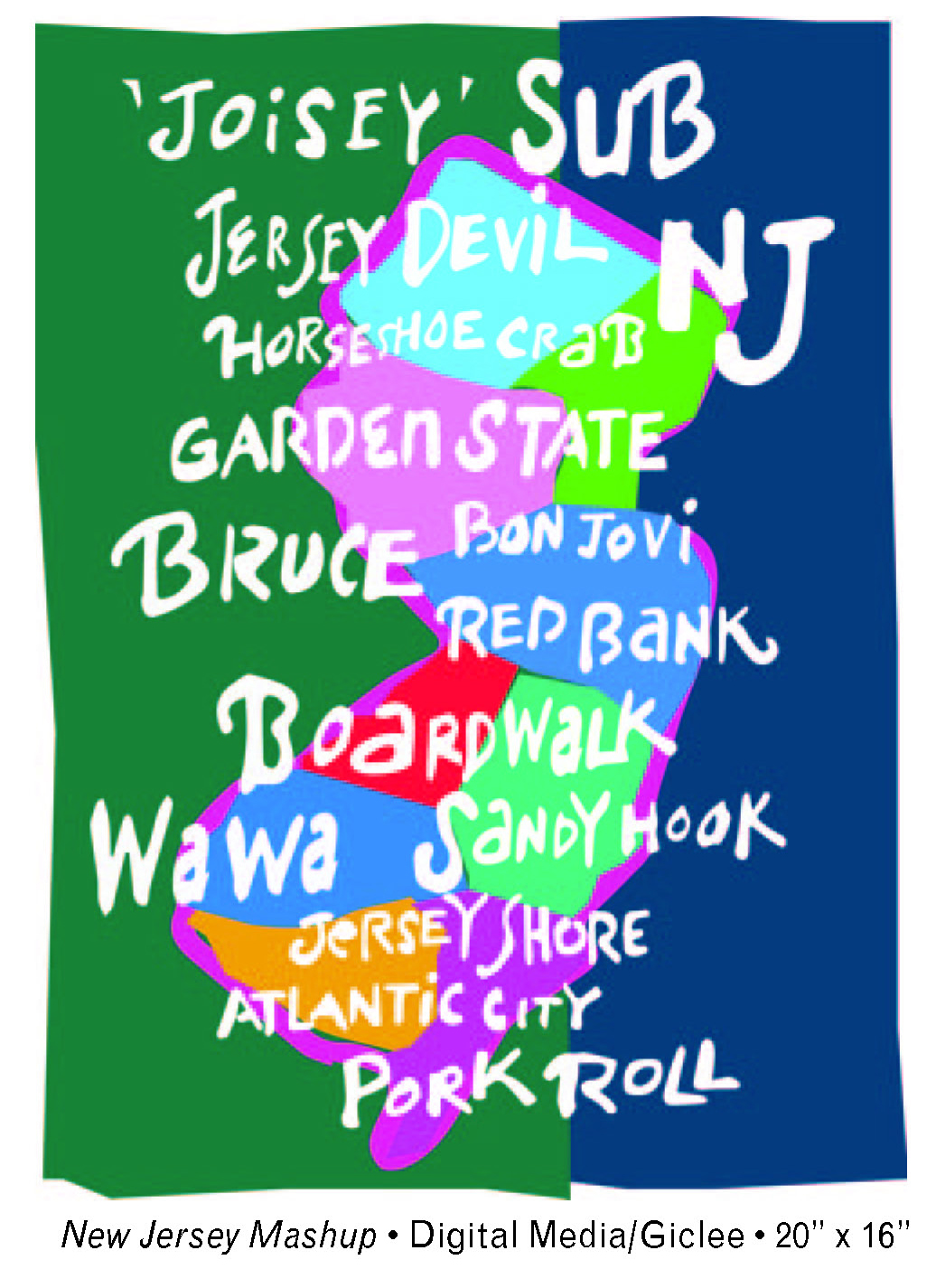
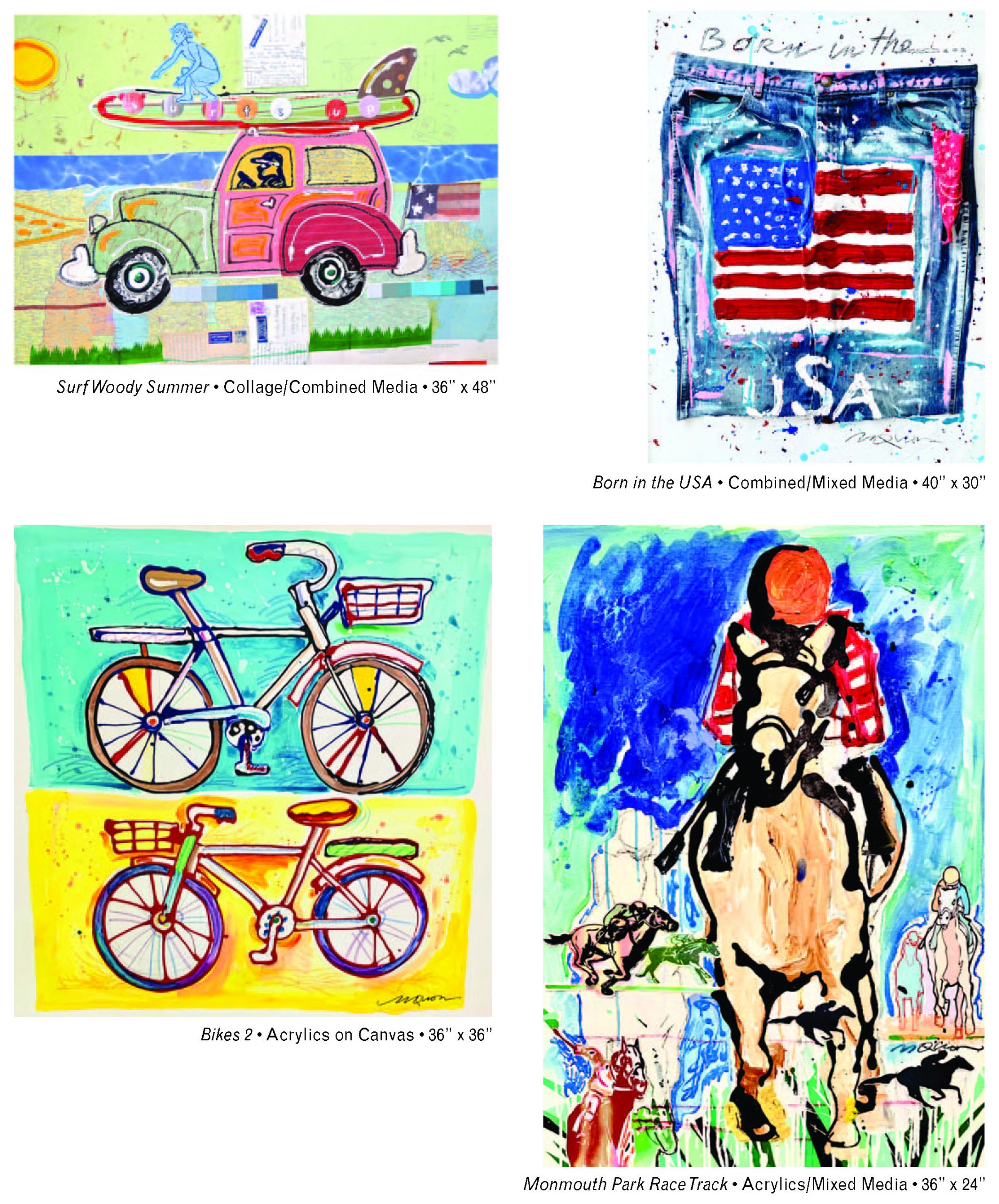

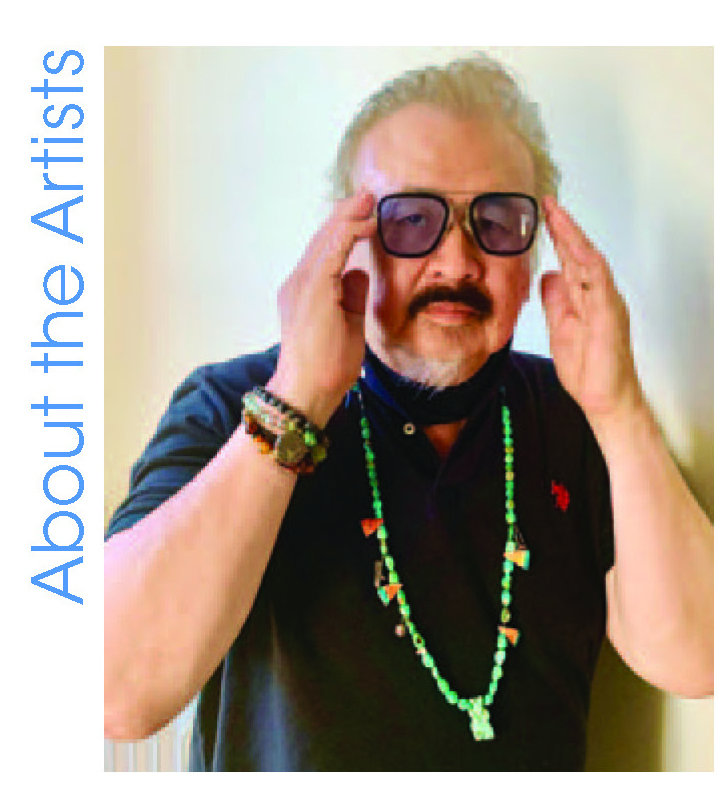
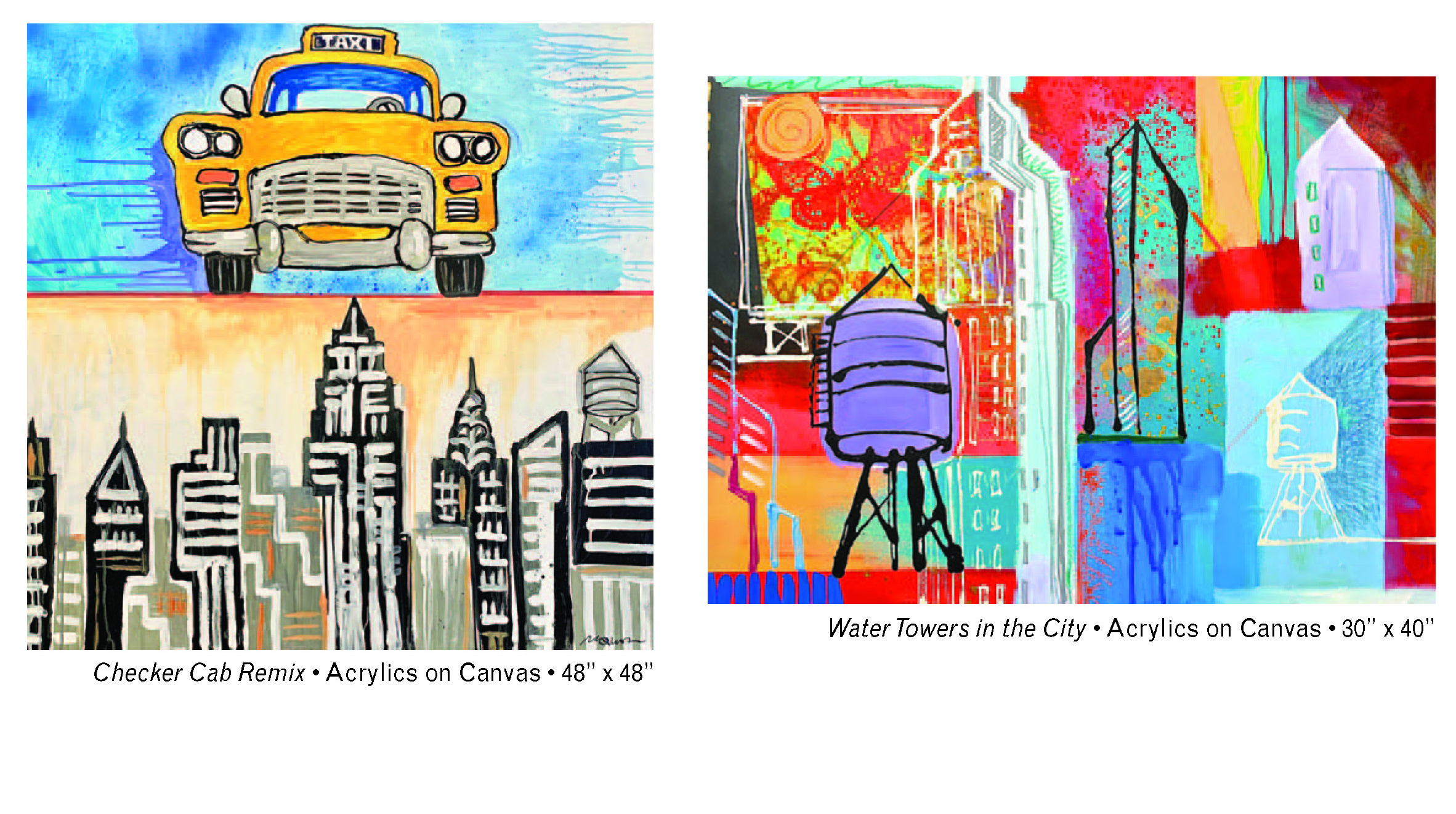

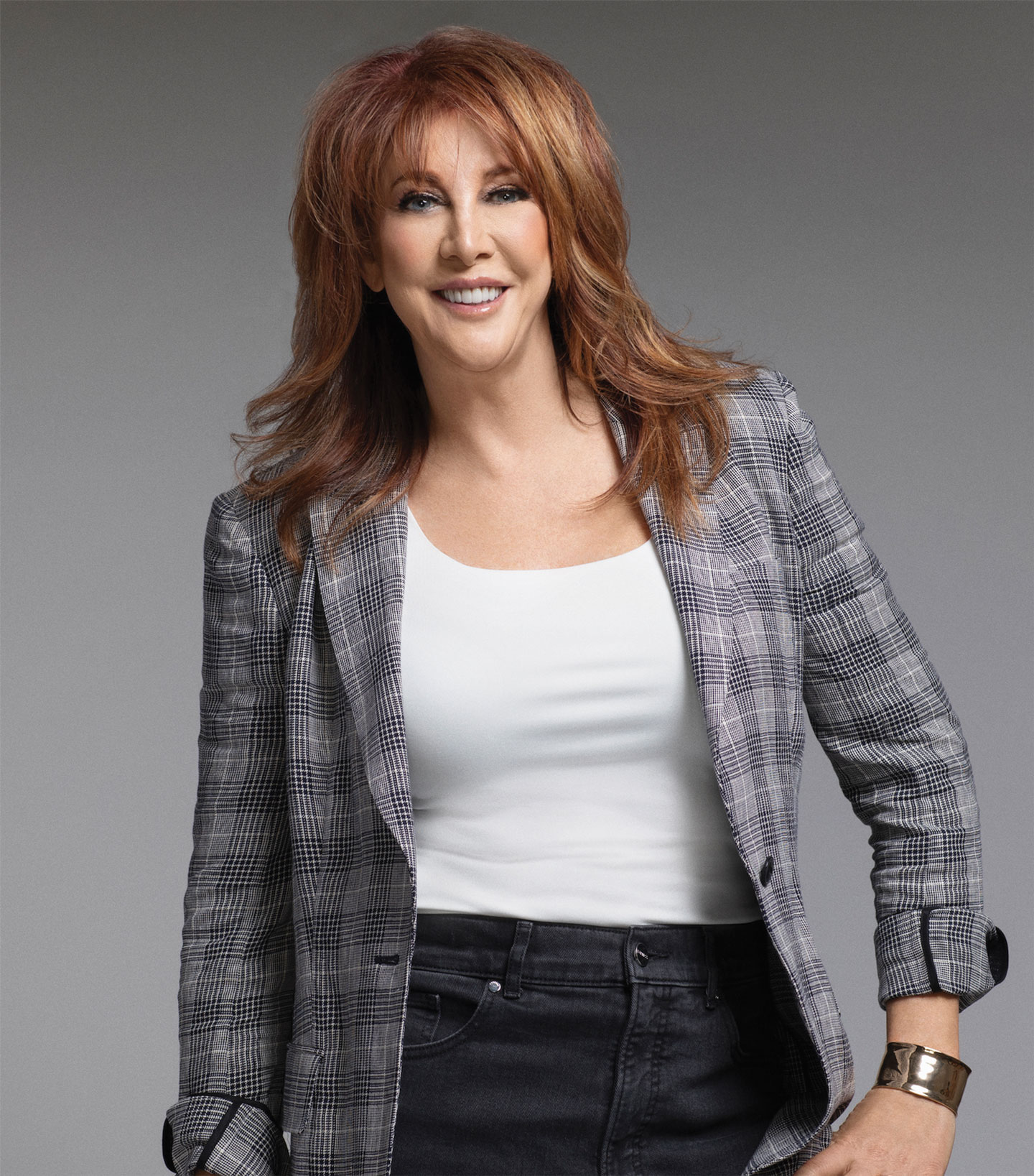
 Grain & Cane Bar and Table • Lobster Roll
Grain & Cane Bar and Table • Lobster Roll The Thirsty Turtle • Pork Tenderloin Special
The Thirsty Turtle • Pork Tenderloin Special The Thirsty Turtle • Brownie Sundae
The Thirsty Turtle • Brownie Sundae The Famished Frog • Mango Guac
The Famished Frog • Mango Guac Arirang Hibachi Steakhouse • Pork Belly Bao Buns
Arirang Hibachi Steakhouse • Pork Belly Bao Buns LongHorn Steakhouse • Outlaw Ribeye
LongHorn Steakhouse • Outlaw Ribeye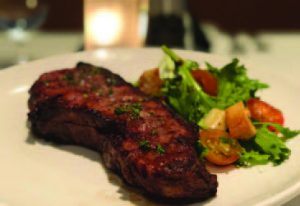 Ursino Steakhouse & Tavern • House Carved 16oz New York Strip Steak
Ursino Steakhouse & Tavern • House Carved 16oz New York Strip Steak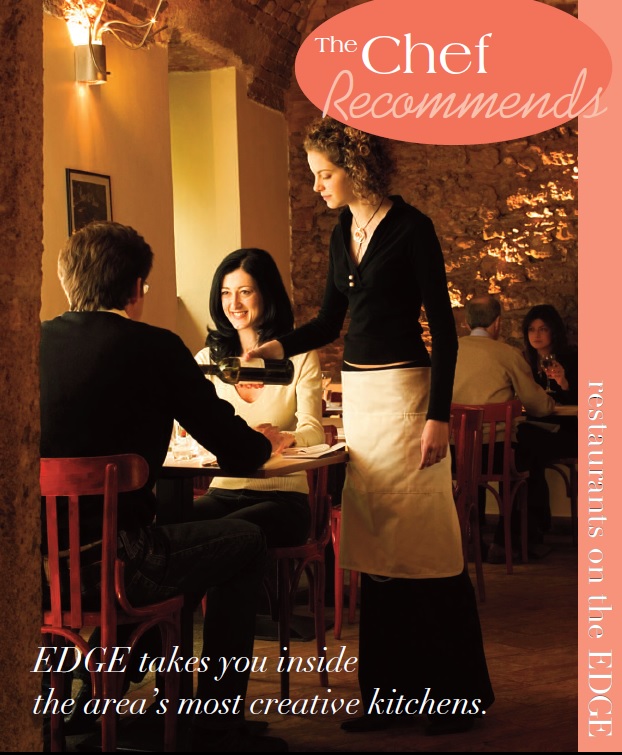
 250 Connell Drive • BERKELEY HEIGHTS
250 Connell Drive • BERKELEY HEIGHTS 1-7 South Avenue W. • CRANFORD
1-7 South Avenue W. • CRANFORD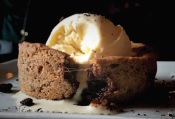 186 Columbia Turnpike • FLORHAM PARK
186 Columbia Turnpike • FLORHAM PARK 18 Washington Street • MORRISTOWN
18 Washington Street • MORRISTOWN 1230 Route 22 West • MOUNTAINSIDE
1230 Route 22 West • MOUNTAINSIDE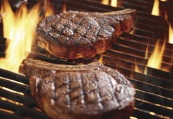 272 Route 22 West • SPRINGFIELD
272 Route 22 West • SPRINGFIELD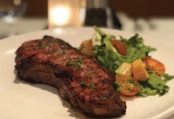 1075 Morris Avenue • UNION
1075 Morris Avenue • UNION

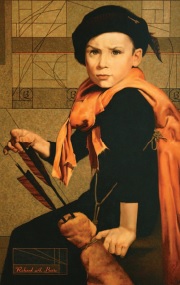









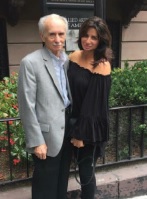 My father and I have never exhibited together,” says Lisa Botto Lee, a New Jersey native now of Weston, FL. “We’re so excited to see our work side by side.” She and her father, Richard A. Botto, of Ridgefield Park, have many accolades. Both do portraits, nature, wildlife, and figurative work. Richard specializes in equine paintings. Says Richard, “It’s been a privilege to paint some of the greatest harness champions,” among them are Moni Maker and Marion Marauder, a Triple Crown winner. A graduate of Pratt Institute, Richard studied at the Art Students League, his work has been exhibited in the National Academy of Design, NY, The Trenton Museum, Bergen Museum of Arts & Sciences, NJ, the Butler Institute of American Art, OH, The Harness Racing Museum & Hall of Fame and other prestigious venues.
My father and I have never exhibited together,” says Lisa Botto Lee, a New Jersey native now of Weston, FL. “We’re so excited to see our work side by side.” She and her father, Richard A. Botto, of Ridgefield Park, have many accolades. Both do portraits, nature, wildlife, and figurative work. Richard specializes in equine paintings. Says Richard, “It’s been a privilege to paint some of the greatest harness champions,” among them are Moni Maker and Marion Marauder, a Triple Crown winner. A graduate of Pratt Institute, Richard studied at the Art Students League, his work has been exhibited in the National Academy of Design, NY, The Trenton Museum, Bergen Museum of Arts & Sciences, NJ, the Butler Institute of American Art, OH, The Harness Racing Museum & Hall of Fame and other prestigious venues.
 unconditional love for his children. My mother and I struggled. It was tough. When I turned 18, I asked her if she loved me—it was right out of Fiddler On the Roof—and she said, “Who sat in the station wagon while you were at your piano lessons? Who took you to Hebrew school? Who takes you to the voice lessons you insist on having? Who carts you all over the place to fulfill your desires? That’s me.”
unconditional love for his children. My mother and I struggled. It was tough. When I turned 18, I asked her if she loved me—it was right out of Fiddler On the Roof—and she said, “Who sat in the station wagon while you were at your piano lessons? Who took you to Hebrew school? Who takes you to the voice lessons you insist on having? Who carts you all over the place to fulfill your desires? That’s me.”

 LOOFTLIGHTER
LOOFTLIGHTER  LG
LG  SALOMON
SALOMON  MARMOT
MARMOT  WEATHERBEETA
WEATHERBEETA  DARN TOUGH
DARN TOUGH 
 Kimchi
Kimchi Mole
Mole Pad Thai
Pad Thai Ema Datshi
Ema Datshi Machboos
Machboos Pepperpot
Pepperpot outer boroughs (as well as northern New Jersey), so finding a good pepperpot isn’t as hard as you might think.
outer boroughs (as well as northern New Jersey), so finding a good pepperpot isn’t as hard as you might think.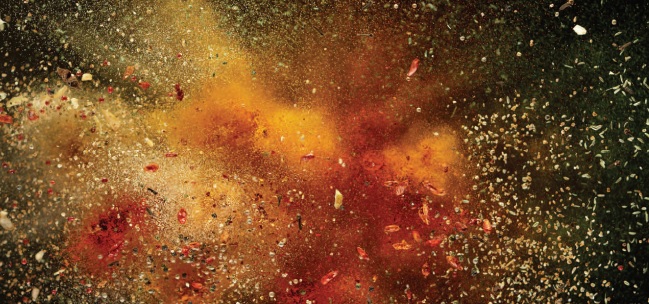
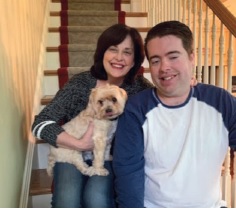 While composing his son’s eulogy—a collection of heart-warming vignettes he planned to recount at Sean’s memorial service—TJ Nelligan realized that the young man who was unable to read or write had created a legacy of life lessons that he wanted to share. On the day of Sean’s funeral, Nelligan told a room packed with hundreds of friends and loved ones, “Live like Sean every day and you will make the lives of others so much better…and it will make you feel better, also.”
While composing his son’s eulogy—a collection of heart-warming vignettes he planned to recount at Sean’s memorial service—TJ Nelligan realized that the young man who was unable to read or write had created a legacy of life lessons that he wanted to share. On the day of Sean’s funeral, Nelligan told a room packed with hundreds of friends and loved ones, “Live like Sean every day and you will make the lives of others so much better…and it will make you feel better, also.”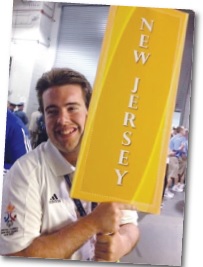 the foremost child neurologist in the world and we went to his office. He took Sean for about an hour and came back and basically told us that our son had intellectual disabilities, that he would never live a normal life…and probably never fit in with normal mainstream society…and that, as he got older, these disabilities would become more pronounced. It was like getting punched in the face, and like Mike Tyson used to say, everyone’s got a plan until they get punched in the face.”
the foremost child neurologist in the world and we went to his office. He took Sean for about an hour and came back and basically told us that our son had intellectual disabilities, that he would never live a normal life…and probably never fit in with normal mainstream society…and that, as he got older, these disabilities would become more pronounced. It was like getting punched in the face, and like Mike Tyson used to say, everyone’s got a plan until they get punched in the face.” “One of the most important things Sean taught me—and this was difficult for a guy with a Type-A personality—was to have gratitude,” says Nelligan. “He couldn’t spell gratitude…but he lived it every single day.” Not surprisingly, Chapter One in Live Like Sean is entitled Be Grateful.
“One of the most important things Sean taught me—and this was difficult for a guy with a Type-A personality—was to have gratitude,” says Nelligan. “He couldn’t spell gratitude…but he lived it every single day.” Not surprisingly, Chapter One in Live Like Sean is entitled Be Grateful.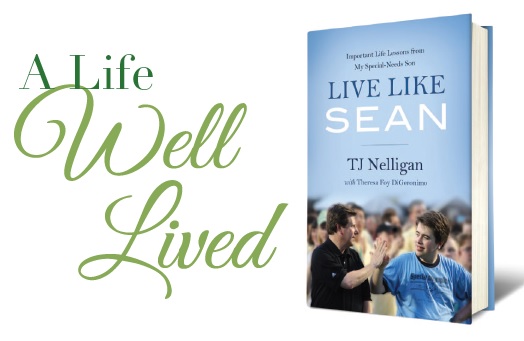



 I was a pre-teen in the early ’70s, and I swear that almost everything that came in more than one color also came in Avocado Green and Harvest Gold. My objection to these colors is perhaps more visceral than it ought to be. One weekend in 1972, my parents rented an enormous Avocado Green Plymouth Fury station wagon (with matching interior) while waiting for our little white Audi wagon to be repaired for the umpteenth time. Halfway through the 100-mile journey to our summer house in the Catskills, the noxious smell of the Naugahyde, combined with the nauseating color scheme, literally made me vomit. It was the last time that I remember ever being carsick. Now you won’t find a single Avocado Green object in my home. Well, except for actual avocados, which I love. Go figure.
I was a pre-teen in the early ’70s, and I swear that almost everything that came in more than one color also came in Avocado Green and Harvest Gold. My objection to these colors is perhaps more visceral than it ought to be. One weekend in 1972, my parents rented an enormous Avocado Green Plymouth Fury station wagon (with matching interior) while waiting for our little white Audi wagon to be repaired for the umpteenth time. Halfway through the 100-mile journey to our summer house in the Catskills, the noxious smell of the Naugahyde, combined with the nauseating color scheme, literally made me vomit. It was the last time that I remember ever being carsick. Now you won’t find a single Avocado Green object in my home. Well, except for actual avocados, which I love. Go figure.
 Warner pressed on with his idea and, in 1993, founded Ty Inc. to produce Beanie Babies. Warner saw the product itself as secondary to the marketing. He priced Beanie Babies at an affordable $5, but sold them only in limited quantities to small specialty shops and toy stores rather than big-box chains—to raise desirability by creating scarcity. Consumers could never find an entire collection of Beanies at one single store.
Warner pressed on with his idea and, in 1993, founded Ty Inc. to produce Beanie Babies. Warner saw the product itself as secondary to the marketing. He priced Beanie Babies at an affordable $5, but sold them only in limited quantities to small specialty shops and toy stores rather than big-box chains—to raise desirability by creating scarcity. Consumers could never find an entire collection of Beanies at one single store. Lorne Greene, who played frontier patriarch Ben Cartwright on Bonanza, had a #1 hit on the US Billboard charts on December 5, 1964 with “Ringo”— a 45 from his album Welcome to the Ponderosa. Singing satirist Allan Sherman re-recorded the song as “The Ballad of Ringo Starr.”
Lorne Greene, who played frontier patriarch Ben Cartwright on Bonanza, had a #1 hit on the US Billboard charts on December 5, 1964 with “Ringo”— a 45 from his album Welcome to the Ponderosa. Singing satirist Allan Sherman re-recorded the song as “The Ballad of Ringo Starr.” My 5-speed Sting-Ray was a dream ride: banana seat, ape-hanger handlebars, a fat rear tire, chrome flared fenders, hand brakes and a “Stik-Shift” mounted to the top frame bar. After Easy Rider, I was one of the countless kids who added Angel Forks to their Sting-Rays. The challenge was learning how to keep from jack-knifing on turns. It took a lot of nasty falls on unforgiving blacktop before getting the hang of it.
My 5-speed Sting-Ray was a dream ride: banana seat, ape-hanger handlebars, a fat rear tire, chrome flared fenders, hand brakes and a “Stik-Shift” mounted to the top frame bar. After Easy Rider, I was one of the countless kids who added Angel Forks to their Sting-Rays. The challenge was learning how to keep from jack-knifing on turns. It took a lot of nasty falls on unforgiving blacktop before getting the hang of it. Alas, some trends truly defy reason or explanation. In 1924, a Hollywood theater owner hired merchant sailor, movie stuntman and childhood human fly (how’s that for a résumé!) Alvin “Shipwreck” Kelly to perch atop his building’s flagpole, as a publicity gimmick, for 13 hours and 13 minutes. It worked…all too well. Almost instantly, Kelly became a national celebrity and flagpole-sitting became an American obsession. For the rest of the decade, young people were scaling flagpoles hoping to set new records and attract newsreel cameras for a few flickering seconds of fame.
Alas, some trends truly defy reason or explanation. In 1924, a Hollywood theater owner hired merchant sailor, movie stuntman and childhood human fly (how’s that for a résumé!) Alvin “Shipwreck” Kelly to perch atop his building’s flagpole, as a publicity gimmick, for 13 hours and 13 minutes. It worked…all too well. Almost instantly, Kelly became a national celebrity and flagpole-sitting became an American obsession. For the rest of the decade, young people were scaling flagpoles hoping to set new records and attract newsreel cameras for a few flickering seconds of fame.
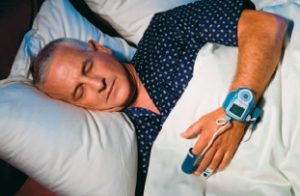 More than 23 million people in the United States have undiagnosed sleep apnea, which is kind of a staggering number given how simple testing has become. The Comprehensive Sleep Disorders Center at Trinitas, located at the Homewood Suites by Hilton, in Cranford, was seeing a steady stream of patients prior to the COVID-19 pandemic. While seeing patients and monitoring their sleep on-site became problematic in the spring of 2020, the center was able to shift gears and ramp up its home testing for sleep apnea thanks to a portable diagnostic device called the WatchPAT®, a small piece of equipment with three components. The PAT stands for Peripheral Arterial Tonometry, which measures arterial pulse volume changes to detect apnea events.
More than 23 million people in the United States have undiagnosed sleep apnea, which is kind of a staggering number given how simple testing has become. The Comprehensive Sleep Disorders Center at Trinitas, located at the Homewood Suites by Hilton, in Cranford, was seeing a steady stream of patients prior to the COVID-19 pandemic. While seeing patients and monitoring their sleep on-site became problematic in the spring of 2020, the center was able to shift gears and ramp up its home testing for sleep apnea thanks to a portable diagnostic device called the WatchPAT®, a small piece of equipment with three components. The PAT stands for Peripheral Arterial Tonometry, which measures arterial pulse volume changes to detect apnea events. Nearly half of all adults snore occasionally. About a quarter snore regularly. Often, snoring is the result of a treatable condition, such as a sinus infection or a deviated septum. The culprit may also be bulky throat muscles or a soft palate or uvula. And, of course, in cases when loud snoring or gasps are interspersed with pauses in breathing—sometimes 20 or 30 an hour—sleep apnea is a strong possibility.
Nearly half of all adults snore occasionally. About a quarter snore regularly. Often, snoring is the result of a treatable condition, such as a sinus infection or a deviated septum. The culprit may also be bulky throat muscles or a soft palate or uvula. And, of course, in cases when loud snoring or gasps are interspersed with pauses in breathing—sometimes 20 or 30 an hour—sleep apnea is a strong possibility. There are some instances where surgery is the best option. For instance, removing the adenoids and tonsils—which is the most common treatment of Obstructive Sleep Apnea in children—nasal polyps or anything else blocking the airway can solve the problem. You may also be a candidate for an uvulopalatopharyngoplasty (UPPP) to remove the excess tissue from the back of the throat.
There are some instances where surgery is the best option. For instance, removing the adenoids and tonsils—which is the most common treatment of Obstructive Sleep Apnea in children—nasal polyps or anything else blocking the airway can solve the problem. You may also be a candidate for an uvulopalatopharyngoplasty (UPPP) to remove the excess tissue from the back of the throat.
 In a day and age when social media and family drama pulls us in so many directions, and the line between work and home is increasingly blurred, the idea we grew up with—“everyone needs eight hours of sleep”—would almost seem quaint if it didn’t sound so crazy. And while some people can truly thrive on five or six hours a night, sleep experts maintain that the traditional range of seven to nine hours a night is still a solid number. Seniors can get away with slightly less, while children actually need more for proper growth and development. So when your teenager is heading into his or her tenth hour of unconsciousness, don’t take it personally. It’s just nature doing its job.
In a day and age when social media and family drama pulls us in so many directions, and the line between work and home is increasingly blurred, the idea we grew up with—“everyone needs eight hours of sleep”—would almost seem quaint if it didn’t sound so crazy. And while some people can truly thrive on five or six hours a night, sleep experts maintain that the traditional range of seven to nine hours a night is still a solid number. Seniors can get away with slightly less, while children actually need more for proper growth and development. So when your teenager is heading into his or her tenth hour of unconsciousness, don’t take it personally. It’s just nature doing its job.
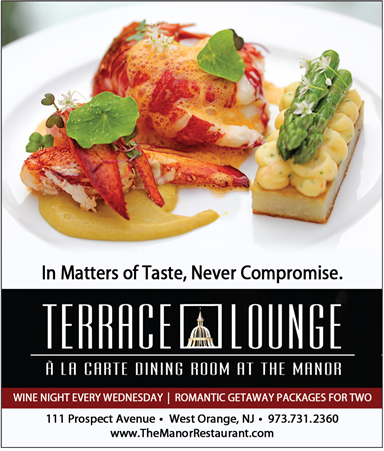
 Interestingly, what all of the aforementioned measuring devices have in common is that they share a single ancestor, one that looked a lot like the old glass-and-mercury thermometer, which, not for nothing, should no longer be in your medicine cabinet (but probably still is). More on this in “Getting Rid of Mercury” on page 43.
Interestingly, what all of the aforementioned measuring devices have in common is that they share a single ancestor, one that looked a lot like the old glass-and-mercury thermometer, which, not for nothing, should no longer be in your medicine cabinet (but probably still is). More on this in “Getting Rid of Mercury” on page 43.


 little bulb located on the business end of the thermometer. For infrared thermometers, a pyrometric sensor gathers the data. Once a reading is complete, you get a number—either as a digital readout, or using those hashmarks on an old-school thermometer.
little bulb located on the business end of the thermometer. For infrared thermometers, a pyrometric sensor gathers the data. Once a reading is complete, you get a number—either as a digital readout, or using those hashmarks on an old-school thermometer. Do you have an old-school mercury and glass thermometer in your medicine cabinet? If so, be aware that it contains half a gram of elemental mercury. That’s not enough to kill you (or even seriously harm you) if you somehow swallowed it (the vapors from the mercury are actually far more harmful), but all the mercury adds up when people start throwing their old thermometers away by the tens of millions. To properly dispose of a mercury thermometer, place it inside a plastic container or glass jar, fill the container with something oil-absorbent (like cat litter or sand) and mark it “Contains Mercury” with a Sharpie. Your town or county will have a hazardous chemical drop-off site where you can dispose of it properly.
Do you have an old-school mercury and glass thermometer in your medicine cabinet? If so, be aware that it contains half a gram of elemental mercury. That’s not enough to kill you (or even seriously harm you) if you somehow swallowed it (the vapors from the mercury are actually far more harmful), but all the mercury adds up when people start throwing their old thermometers away by the tens of millions. To properly dispose of a mercury thermometer, place it inside a plastic container or glass jar, fill the container with something oil-absorbent (like cat litter or sand) and mark it “Contains Mercury” with a Sharpie. Your town or county will have a hazardous chemical drop-off site where you can dispose of it properly. While we’re on the topic of history, it’s worth noting that the basic principles behind the thermometer were known in ancient Greece more than 2,500 years ago. However, the first device you’d think of as approaching a “modern” thermometer was pioneered by Santorio Santorio (right) at the University of Padua in the early 1600s. Galileo, who was on a first-name basis with the professor, is believed to have had some input—as did other scientists who were exchanging ideas in Venice at the time. Temperature-taking was all the rage in 17th century Europe, it seems. Santorio’s invention used the expansion of water, not mercury, to show changes in temperature and was called a thermoscope. It became a thermometer after a standardized scale was added. The first scale measured only eight different “degrees.”
While we’re on the topic of history, it’s worth noting that the basic principles behind the thermometer were known in ancient Greece more than 2,500 years ago. However, the first device you’d think of as approaching a “modern” thermometer was pioneered by Santorio Santorio (right) at the University of Padua in the early 1600s. Galileo, who was on a first-name basis with the professor, is believed to have had some input—as did other scientists who were exchanging ideas in Venice at the time. Temperature-taking was all the rage in 17th century Europe, it seems. Santorio’s invention used the expansion of water, not mercury, to show changes in temperature and was called a thermoscope. It became a thermometer after a standardized scale was added. The first scale measured only eight different “degrees.” physicist proposed a new temperature scale, which used 100 to express the freezing point of water and 0 for the boiling point of water. His name was Anders Celsius (right), and his colleagues loved the idea…with one small tweak: They flipped the script, making 0 the cold end and 100 the hot end. Outside of the academic community, almost no one in America has the faintest idea how Celsius works, so don’t feel bad.
physicist proposed a new temperature scale, which used 100 to express the freezing point of water and 0 for the boiling point of water. His name was Anders Celsius (right), and his colleagues loved the idea…with one small tweak: They flipped the script, making 0 the cold end and 100 the hot end. Outside of the academic community, almost no one in America has the faintest idea how Celsius works, so don’t feel bad. The first doctor who stuck a thermometer into a person as part of his patient practice was Herman Boerhaave (left), a Dutch chemist and physician who founded the first European teaching hospital at the University of Leiden in the early 1700s. His patients were none too thrilled about the idea—it took up to a half-hour to obtain an accurate reading, so no matter the input, the process was tedious and unpleasant. And if you think that’s a long time, consider that it took 150 more years to cut the temperature-taking times down to five minutes.
The first doctor who stuck a thermometer into a person as part of his patient practice was Herman Boerhaave (left), a Dutch chemist and physician who founded the first European teaching hospital at the University of Leiden in the early 1700s. His patients were none too thrilled about the idea—it took up to a half-hour to obtain an accurate reading, so no matter the input, the process was tedious and unpleasant. And if you think that’s a long time, consider that it took 150 more years to cut the temperature-taking times down to five minutes.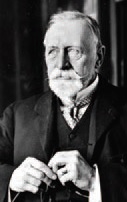 Allbutt (right). Just as thrilling was the fact that his clinical thermometer was only six inches long—half the (yikes) standard length during the early 1800s. Later in life, Allbutt was rewarded for his ingenuity by being appointed a Commissioner of Lunacy for England and Wales. Oh, and by the way, if you think wearing a mask and getting your forehead scanned is annoying, imagine waiting in line to get into Whole Foods only to encounter a 12-inch thermometer at the front door!
Allbutt (right). Just as thrilling was the fact that his clinical thermometer was only six inches long—half the (yikes) standard length during the early 1800s. Later in life, Allbutt was rewarded for his ingenuity by being appointed a Commissioner of Lunacy for England and Wales. Oh, and by the way, if you think wearing a mask and getting your forehead scanned is annoying, imagine waiting in line to get into Whole Foods only to encounter a 12-inch thermometer at the front door!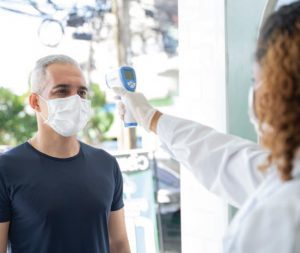 In conclusion, and to underscore an earlier point, the newer, safer methods for temperature-taking have made the mercury-and-glass thermometer entirely obsolete. Starting around 20 years ago, states began banning their sale and the National Institute of Standards and Technology stopped calibrating mercury thermometers a decade ago.
In conclusion, and to underscore an earlier point, the newer, safer methods for temperature-taking have made the mercury-and-glass thermometer entirely obsolete. Starting around 20 years ago, states began banning their sale and the National Institute of Standards and Technology stopped calibrating mercury thermometers a decade ago.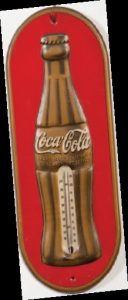
 Mercury isn’t the only substance used in thermometers. Think of all the souvenir and advertising thermometers you’ve seen in your life. Some people actually collect them. The red stuff they contain is dyed alcohol or ethanol. It’s not as accurate as mercury and is not dangerous if the thermometer breaks. The substance is accurate up to 172 degrees, so it’s really only good for measuring air and body temperature.
Mercury isn’t the only substance used in thermometers. Think of all the souvenir and advertising thermometers you’ve seen in your life. Some people actually collect them. The red stuff they contain is dyed alcohol or ethanol. It’s not as accurate as mercury and is not dangerous if the thermometer breaks. The substance is accurate up to 172 degrees, so it’s really only good for measuring air and body temperature.
 EDGE: In the FOX series The Moodys, you play Ann Moody, an alcohol counselor. There’s a personal story behind that.
EDGE: In the FOX series The Moodys, you play Ann Moody, an alcohol counselor. There’s a personal story behind that.

 EDGE: Then came About Last Night (above), with Rob Lowe, Demi Moore and Jim Belushi…
EDGE: Then came About Last Night (above), with Rob Lowe, Demi Moore and Jim Belushi…


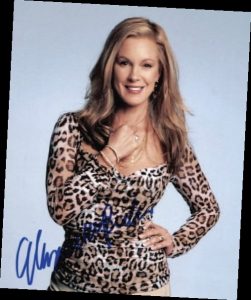 EP: When you get to be a certain age, you don’t care what people think anymore. You just don’t. You’ve been around for long enough to just say, “I am who I am, and I’m proud of who I am.” I love these parts of myself, and I want to share them because I think I’m really great. I do. I love my life. I love my husband. I love my kids. I just feel like I’ve been given so many gifts. And now I’m getting to play a really great part of myself. A lot of people don’t get an opportunity like that, so I adore my creators and Denis for bringing me along on this. They’re allowing me to be nutty and obsessive and fun—a woman who maybe has too many glasses of wine, or maybe overdecorates the house at Christmas, who might be a little bit cloying at times when it comes to her children. These are all real facets of me.
EP: When you get to be a certain age, you don’t care what people think anymore. You just don’t. You’ve been around for long enough to just say, “I am who I am, and I’m proud of who I am.” I love these parts of myself, and I want to share them because I think I’m really great. I do. I love my life. I love my husband. I love my kids. I just feel like I’ve been given so many gifts. And now I’m getting to play a really great part of myself. A lot of people don’t get an opportunity like that, so I adore my creators and Denis for bringing me along on this. They’re allowing me to be nutty and obsessive and fun—a woman who maybe has too many glasses of wine, or maybe overdecorates the house at Christmas, who might be a little bit cloying at times when it comes to her children. These are all real facets of me.


 Some of us have come tantalizingly close, but it’s never quite right, is it? Even the most talented home chefs with “professional” equipment and designer kitchens eventually arrived at this conclusion. In fact, I’ll bet they were the first to pick up the phone and order out once it was safe. So how do you make an honest-to-goodness pizza-parlor pie at home? With an honest-to-goodness pizza oven.
Some of us have come tantalizingly close, but it’s never quite right, is it? Even the most talented home chefs with “professional” equipment and designer kitchens eventually arrived at this conclusion. In fact, I’ll bet they were the first to pick up the phone and order out once it was safe. So how do you make an honest-to-goodness pizza-parlor pie at home? With an honest-to-goodness pizza oven.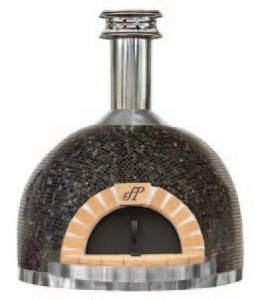 begins. Google “pizza oven suppliers” and you’ll notice that the word forno—which translates as “oven”—appears in many trade names. Examples include Forno Bravo, a company that builds and ships from Monterey; Forno Piombo, a father-and-son team that annually produces only 160 custom ovens (starting at $9,500) that are inspired by Tuscany but handcrafted in the Napa Valley; and Fontana Forni, which offers made-in-Italy models using techniques crafted by generations of the Fontana family.
begins. Google “pizza oven suppliers” and you’ll notice that the word forno—which translates as “oven”—appears in many trade names. Examples include Forno Bravo, a company that builds and ships from Monterey; Forno Piombo, a father-and-son team that annually produces only 160 custom ovens (starting at $9,500) that are inspired by Tuscany but handcrafted in the Napa Valley; and Fontana Forni, which offers made-in-Italy models using techniques crafted by generations of the Fontana family.
 Three billion pizzas are sold in the US each year accounting for $40 billion in revenues. During the pandemic, Pizza Hut and Domino’s saw delivery and off-premises sales soar by 21% and 36% respectively. Here are some other fun facts about pizza in America…
Three billion pizzas are sold in the US each year accounting for $40 billion in revenues. During the pandemic, Pizza Hut and Domino’s saw delivery and off-premises sales soar by 21% and 36% respectively. Here are some other fun facts about pizza in America…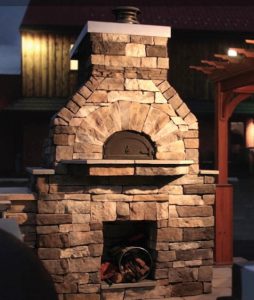 More important than finding a cool name is determining the type of oven appropriate for your situation. These are your four basic choices:
More important than finding a cool name is determining the type of oven appropriate for your situation. These are your four basic choices: Ask any pizza aficionado and you’ll almost always be told that an authentic Italian pie can only come from a wood-fired oven with a traditional stone base. Although these ovens are not unheard-of in residential kitchens in New Jersey, you’re far more likely to find one a few steps outside the kitchen, on a patio or as part of an outdoor entertainment area. Would it surprise you to know that one of the top people in the outdoor pizza business is located in New Jersey? Decades-old Backyard Brick Ovens is right in the neighborhood, in Edison. Its owner, Scot Cosentino, is not only a master builder of wood-fired pizza ovens, but he takes pride in billing himself as a World Champion Pizza Maker. For more than 30 years, Cosentino has been designing, engineering and producing pizza ovens for sites ranging from private backyards to commercial restaurants.
Ask any pizza aficionado and you’ll almost always be told that an authentic Italian pie can only come from a wood-fired oven with a traditional stone base. Although these ovens are not unheard-of in residential kitchens in New Jersey, you’re far more likely to find one a few steps outside the kitchen, on a patio or as part of an outdoor entertainment area. Would it surprise you to know that one of the top people in the outdoor pizza business is located in New Jersey? Decades-old Backyard Brick Ovens is right in the neighborhood, in Edison. Its owner, Scot Cosentino, is not only a master builder of wood-fired pizza ovens, but he takes pride in billing himself as a World Champion Pizza Maker. For more than 30 years, Cosentino has been designing, engineering and producing pizza ovens for sites ranging from private backyards to commercial restaurants.
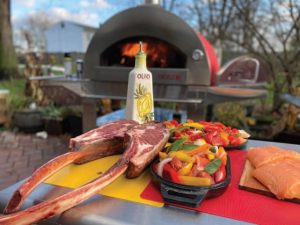 Today, the
Today, the


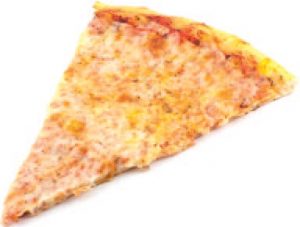


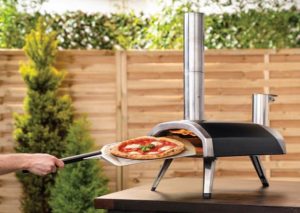 Back to business. If you prefer an indoor pizza installation, the options at the low end begin with electric, compact, and countertop ovens that can start as low as $299. The Ooni Fyra is a popular pick at that price point. If you are willing and able to make a $999 investment, the Breville Pizzaiolo model qualifies as a very high-temp “smart” pizza oven. With no unique set-up involved, these ovens can sit on any flat surface in the kitchen to quickly turn out crispy 12-inch pizzas, whether you’ve made them yourself or grabbed one out of the freezer.
Back to business. If you prefer an indoor pizza installation, the options at the low end begin with electric, compact, and countertop ovens that can start as low as $299. The Ooni Fyra is a popular pick at that price point. If you are willing and able to make a $999 investment, the Breville Pizzaiolo model qualifies as a very high-temp “smart” pizza oven. With no unique set-up involved, these ovens can sit on any flat surface in the kitchen to quickly turn out crispy 12-inch pizzas, whether you’ve made them yourself or grabbed one out of the freezer.
 A final thought on “cost.” As anyone who spent time in a college dorm can tell you, the price of pizza is measured both in dollars and pounds. Think of all the empty freezer cases during the height of the pandemic; those carbs had to go somewhere. Maybe that’s why Pelotons were on back order and people started buying those black-mirror home gyms. Alas, the uncomfortable truth about our favorite comfort food is that consuming a typical pie—whether all at once or as reheated leftovers—can easily surpass 2,000 calories…and depending on the quantity of cheese on the pie, more than 200 grams of fat.
A final thought on “cost.” As anyone who spent time in a college dorm can tell you, the price of pizza is measured both in dollars and pounds. Think of all the empty freezer cases during the height of the pandemic; those carbs had to go somewhere. Maybe that’s why Pelotons were on back order and people started buying those black-mirror home gyms. Alas, the uncomfortable truth about our favorite comfort food is that consuming a typical pie—whether all at once or as reheated leftovers—can easily surpass 2,000 calories…and depending on the quantity of cheese on the pie, more than 200 grams of fat.
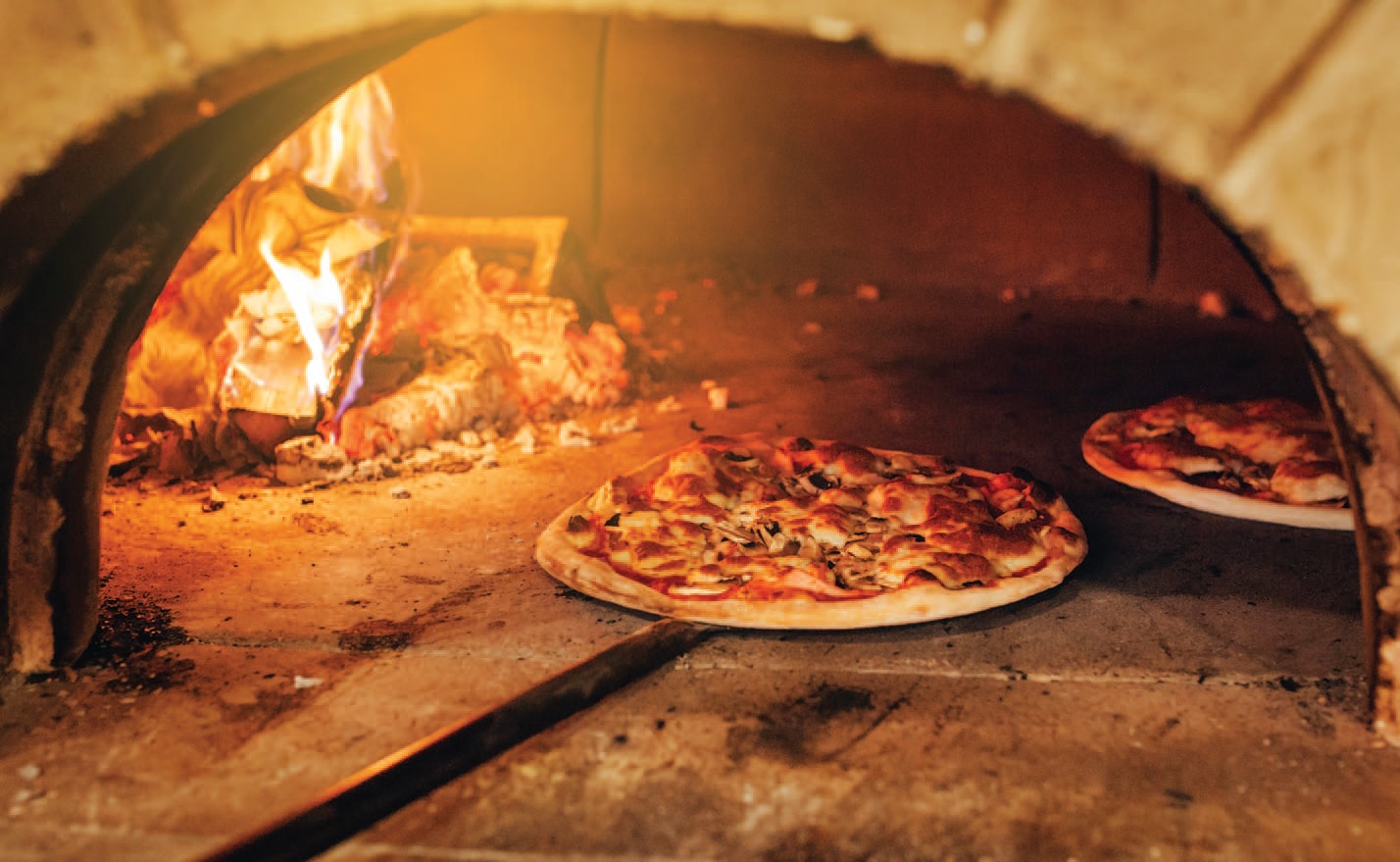
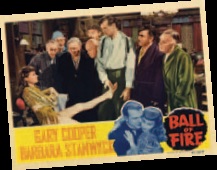 Ball of Fire • 1941
Ball of Fire • 1941 White Heat • 1949
White Heat • 1949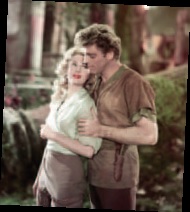 The Flame and the Arrow • 1950
The Flame and the Arrow • 1950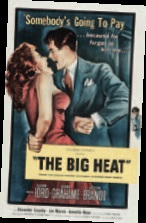 The Big Heat • 1953
The Big Heat • 1953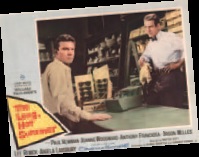 The Long, Hot Summer • 1958
The Long, Hot Summer • 1958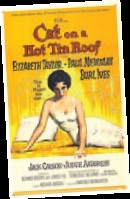 Cat On a Hot Tin Roof • 1958
Cat On a Hot Tin Roof • 1958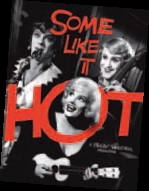 Some Like It Hot • 1959
Some Like It Hot • 1959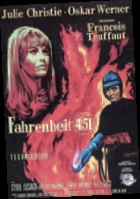
 In the Heat of the Night • 1967
In the Heat of the Night • 1967 Body Heat • 1981
Body Heat • 1981 Chariots of Fire • 1981
Chariots of Fire • 1981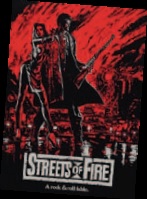
 St. Elmo’s Fire • 1985
St. Elmo’s Fire • 1985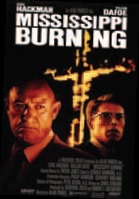
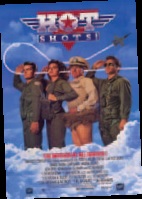

 Mad Hot Ballroom • 2005
Mad Hot Ballroom • 2005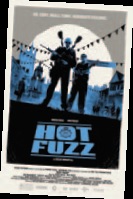
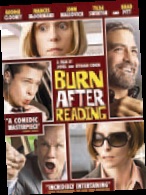 Burn After Reading • 2008
Burn After Reading • 2008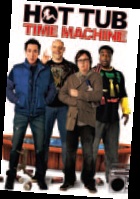 Hot Tub Time Machine • 2010
Hot Tub Time Machine • 2010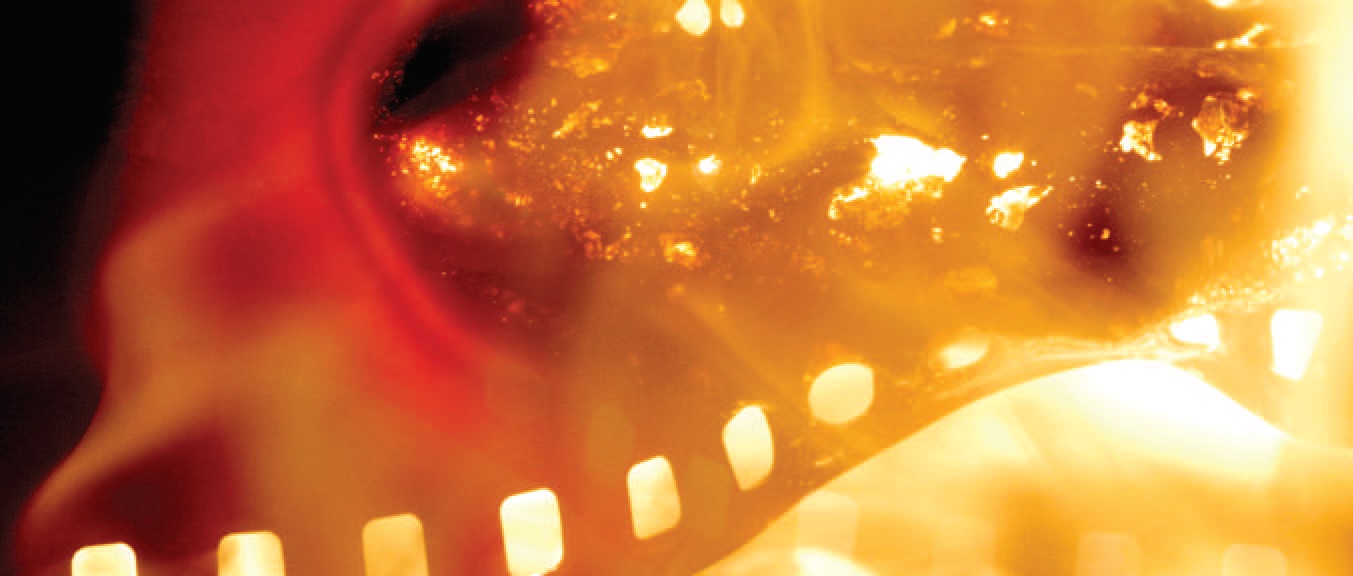


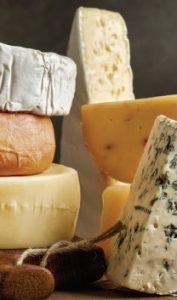 I’m not a highly curated, picture-perfect human. I’m a quirky, line-drawing, scribbles person. Also, I would operate at lightning speed if I could. Thankfully, I’ve found an antidote to this haste: fermentation. When things aren’t moving fast enough for me, fermentation reminds me of the value of waiting. Feeding my sourdough starter every morning, brewing a new batch of kombucha weekly…at the risk of sounding like an unhinged hipster, these are the routines that ground me. The practice of fermentation is as old as civilization itself, but the splendor of it found me in my early thirties while exploring cheese, wine, and bread in England, Italy and France.
I’m not a highly curated, picture-perfect human. I’m a quirky, line-drawing, scribbles person. Also, I would operate at lightning speed if I could. Thankfully, I’ve found an antidote to this haste: fermentation. When things aren’t moving fast enough for me, fermentation reminds me of the value of waiting. Feeding my sourdough starter every morning, brewing a new batch of kombucha weekly…at the risk of sounding like an unhinged hipster, these are the routines that ground me. The practice of fermentation is as old as civilization itself, but the splendor of it found me in my early thirties while exploring cheese, wine, and bread in England, Italy and France.
 ” However you say it, scones are an essential part of the afternoon-tea tradition (and also wonderful any time of day, in my opinion). Cranberries and blue cheese are a winning combination, and especially Christmasy. Another of my favorite variations is to swap out the cranberries for 2 tablespoons of coarsely chopped hazelnuts; if you do opt for the hazelnuts, try the scones with a smear of red onion and port marmalade or another fruity jam to bring the sweet kick.
” However you say it, scones are an essential part of the afternoon-tea tradition (and also wonderful any time of day, in my opinion). Cranberries and blue cheese are a winning combination, and especially Christmasy. Another of my favorite variations is to swap out the cranberries for 2 tablespoons of coarsely chopped hazelnuts; if you do opt for the hazelnuts, try the scones with a smear of red onion and port marmalade or another fruity jam to bring the sweet kick.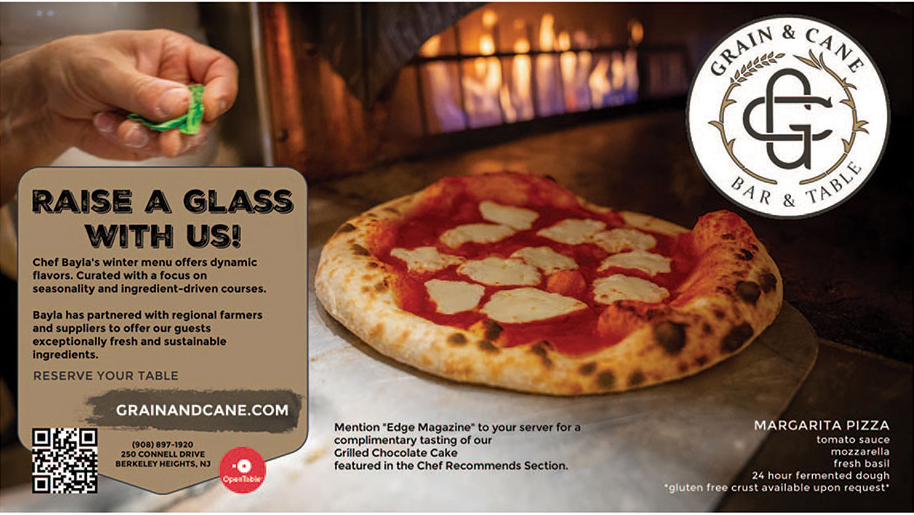
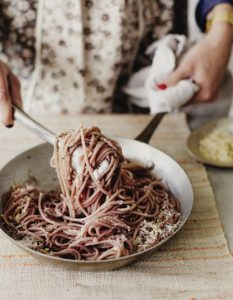

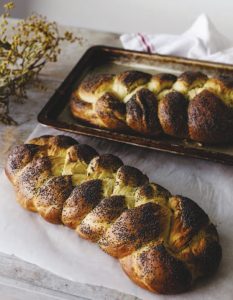 When I started writing Cheese, Wine and Bread, I asked my mom where she initially got her challah recipe, and learned that “mom’s loaf ” has evolved over time. This current iteration, which she’s made consistently for over a decade, was adapted from a dinner roll recipe from a 1990s issue of Cooking Light.
When I started writing Cheese, Wine and Bread, I asked my mom where she initially got her challah recipe, and learned that “mom’s loaf ” has evolved over time. This current iteration, which she’s made consistently for over a decade, was adapted from a dinner roll recipe from a 1990s issue of Cooking Light.

 If fermentation is the preservation of food, those same principles of change and transformation must apply to us. We bring a bit of our past selves with us, and a hope for the future. When a new obstacle, opportunity, or question arises—as one always does—all we need to do is take a deep breath and let things ferment. Don’t overthink it. Just let it ferment.
If fermentation is the preservation of food, those same principles of change and transformation must apply to us. We bring a bit of our past selves with us, and a hope for the future. When a new obstacle, opportunity, or question arises—as one always does—all we need to do is take a deep breath and let things ferment. Don’t overthink it. Just let it ferment.



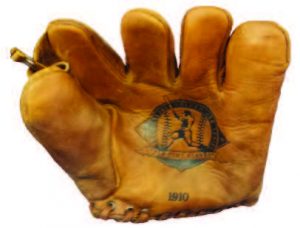 I GOT IT! I GOT IT!
I GOT IT! I GOT IT!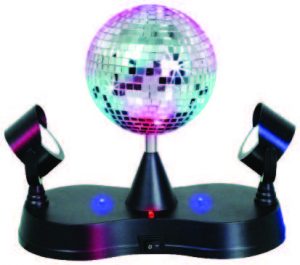 TURN THE BEAT AROUND
TURN THE BEAT AROUND DESK JOB
DESK JOB
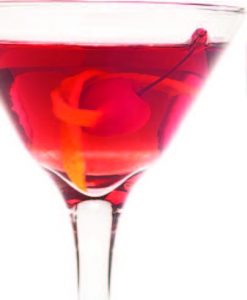 COCKTAIL HOUR
COCKTAIL HOUR SHERRY?
SHERRY? Feeling inspired to go old school? You don’t have to invest in a mint’s worth of single-malt Scotches. (Though checking out some small-batch Bourbons with proper pedigrees will add to your education.) You can ponder life’s most serious questions over a spot of Port (the value-priced Fonseca Bin 27 will do, and nicely) or toast the night to come with a Bordeaux wine glass filled with Lillet on the rocks, served with a twist of orange peel or a squirt of fresh lime juice. The aperitif from western France charms with its mysterious mix of wine, fruit and herbs—and it is mysterious, since the folks at Lillet long have refused to divulge the recipe. You can plow through Sitwell’s 1,000-page tome fortified by one of those acquired-taste spirits, Campari, Pernod or Aperol. You can even make a martini, as long as you follow the rules of cocktail crafting set down in the Jazz Age.
Feeling inspired to go old school? You don’t have to invest in a mint’s worth of single-malt Scotches. (Though checking out some small-batch Bourbons with proper pedigrees will add to your education.) You can ponder life’s most serious questions over a spot of Port (the value-priced Fonseca Bin 27 will do, and nicely) or toast the night to come with a Bordeaux wine glass filled with Lillet on the rocks, served with a twist of orange peel or a squirt of fresh lime juice. The aperitif from western France charms with its mysterious mix of wine, fruit and herbs—and it is mysterious, since the folks at Lillet long have refused to divulge the recipe. You can plow through Sitwell’s 1,000-page tome fortified by one of those acquired-taste spirits, Campari, Pernod or Aperol. You can even make a martini, as long as you follow the rules of cocktail crafting set down in the Jazz Age.